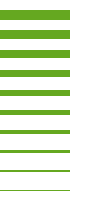https://doi.io-warnemuende.de/10.12754/msr-2009-0079
doi:10.12754/msr-2009-0079
© Author(s) 2009. This work is distributed
under

Dieses Werk ist lizenziert unter einer Creative Commons Namensnennung - Nicht kommerziell - Keine Bearbeitungen 4.0 International Lizenz.
Biologische Bedingungen in der deutschen ausschließlichen Wirtschaftszone der Nordsee im Jahre 2008
Abstract. In 2008, a complex biological monitoring was conducted in the German exclusive economical zone of the North Sea for the first time, conducted by the Leibniz Institute of Baltic Sea Research Warnemünde (IOW) and commissioned and supported by the Federal Maritime and Hydrographic Agency (BSH). Phytoplankton (incl. chlorophyll a), mesozooplankton and macrozoobenthos were investigated at 12 stations. The plankton was sampled at 5 cruises and the zoobenthos at 2 cruises. The phytoplankton comprised 128 taxa, most of them belonging to the diatoms. A Phaeocystisbloom with 17.3 Mill. cells/L was found in front if the Isle of Borkum on 2.4.2008. The maximum of chlorophyll a of 12.33 mg m-3 was identified in the same coastal area on 30.5.2008. The most important species in terms of biomass were Noctiluca scintillans, Rhizosolenia styliformis and Guinardia flaccida. In the mesozooplankton, a total of 113 taxa of twelve phyla and a subphylum were noted with the subphylum of Crustaceans covering 58 taxa. The twelve phyla and the subphylum were present throughout the year except for the Nemertea and Platyhelminthes which were restricted to early spring or summer respectively. Spatial patterns of zooplankton species were closely related to estuarine properties. With increasing distance from river mouths, initially the number of species decreased to a minimum and increased again to more offshore areas. The Elbe River plume was characterized by low salinity and high chlorophyll a-concentrations. It was northward oriented, while the zooplankton abundance maximum was found west of Helgoland. This suggests that there was no successive relationship between both. Zooplankton seemed to originate from more westerly regions. This was underlined by the appearance of the Mediterranean species Penilia arivirostris and deep-water-copepods in this zone. The macrozoobenthos was investigated during spring and autumn 2008. In both sampling campaigns altogether 218 species were recorded. Between the stations the species number varied from 23 (off Amrum) to 65 (northwestern German Bight). With 82 species (both campaigns added) the station at the Dogger Bank was most diverse. Whereas the shallower and exposed areas off Amrum and Sylt were settled with low individual numbers (in maximum 200 ind./m²), in the deeper parts higher abundances were observed. The ash free dry weight at stations ranged from 1.82 g/m² west of the White Bank in spring and 20.77 g/m² north of Borkum. The monitoring stations represent five of the eight known benthic communities of the German part of the North Sea. 34 species from the Red List (RACHOR 1998) could be observed during this study.
Abstract. Im Jahre 2008 wurde erstmalig ein biologisches Monitoring im deutschen offshore-Bereich (meistens AWZ) der Nordsee durch das IOW im Auftrage des BSH durchgeführt. Es wurde das Phytoplankton (einschl. Chlorophyll a), Mesozooplankton und Makrozoobenthos an 12 Stationen untersucht. Das Plankton wurde auf 5 Fahrten, das Benthos lediglich auf der Frühjahrs- und Herbstfahrt beprobt. Im Phytoplankton wurden 128 Taxa gefunden, von denen die meisten zu den Kieselalgen gehörten. Vor der Insel Borkum wurde am 2.4.2008 eine Phaeocystis-Blüte mit 17,3 Mill. Zellen/L gefunden. In selben Gebiet wurde am 30.5.08 der Spitzenwert der Chlorophyll a-Konzentration mit 12,33 mg m-3 gemessen. Die bedeutendsten Arten bezüglich Biomasse waren Noctiluca scintillans, Rhizosolenia styliformis und Guinardia flaccida. Im Zooplankton wurden 113 Taxa aus zwölf Stämmen bzw. einem Unterstamm notiert, wobei allein auf die Crustacea 58 Taxa entfielen. Von zwölf Stämmen und dem Unterstamm der Crustacea waren in Abhängigkeit von den Reproduktionsmodi nur die Plathelminthes und die Nemertea nicht ganzjährig anzutreffen. Mit zunehmender Entfernung zu Flussmündungen (Elbe, Weser) ging zunächst die Anzahl der Arten auf ein Minimum zurück, um dann in Richtung offene Nordsee wieder anzusteigen (im August). Während im August die Flußmündungsfahne der Elbe, charakterisiert durch niedrigen Salzgehalt und höhere Chlorophylla-a Konzentration, nordwärts setzte, war das Zooplankton-Abundanzmaximum westlich von Helgoland anzutreffen. Das lässt vermuten, dass hier kein sukzessiver Zusammenhang bestand und das Zooplankton aus westlicheren Gebieten stammt. Das wurde durch das Auftreten von der mediterranen Arten Penilia arivirostris und Tiefwasser-Copepoden in dieser Zone unterstrichen. Im Makrozoobenthos konnten insgesamt 218 Taxa festgestellt werden. Die Artenzahlen schwankten zwischen den Stationen und Beprobungsterminen zwischen 23 (vor Amrum) und 65 (Nordwestliche Deutsche Bucht). Während die eher flachen und exponierten Bereiche vor Amrum und Sylt mit geringen Abundanzen besiedelt waren (maximal 200 Ind./m²), wurden in den tieferen Bereichen der Nordsee höhere Dichten beobachtet. Die Monitoringstationen repräsentieren 5 der 8 für den deutschen Bereich der Nordsee beschriebenen benthischen Lebensgemeinschaften. Von der Roten Liste (RACHOR 1998) konnten 34 Arten während dieser Studie nachgewiesen werden.
